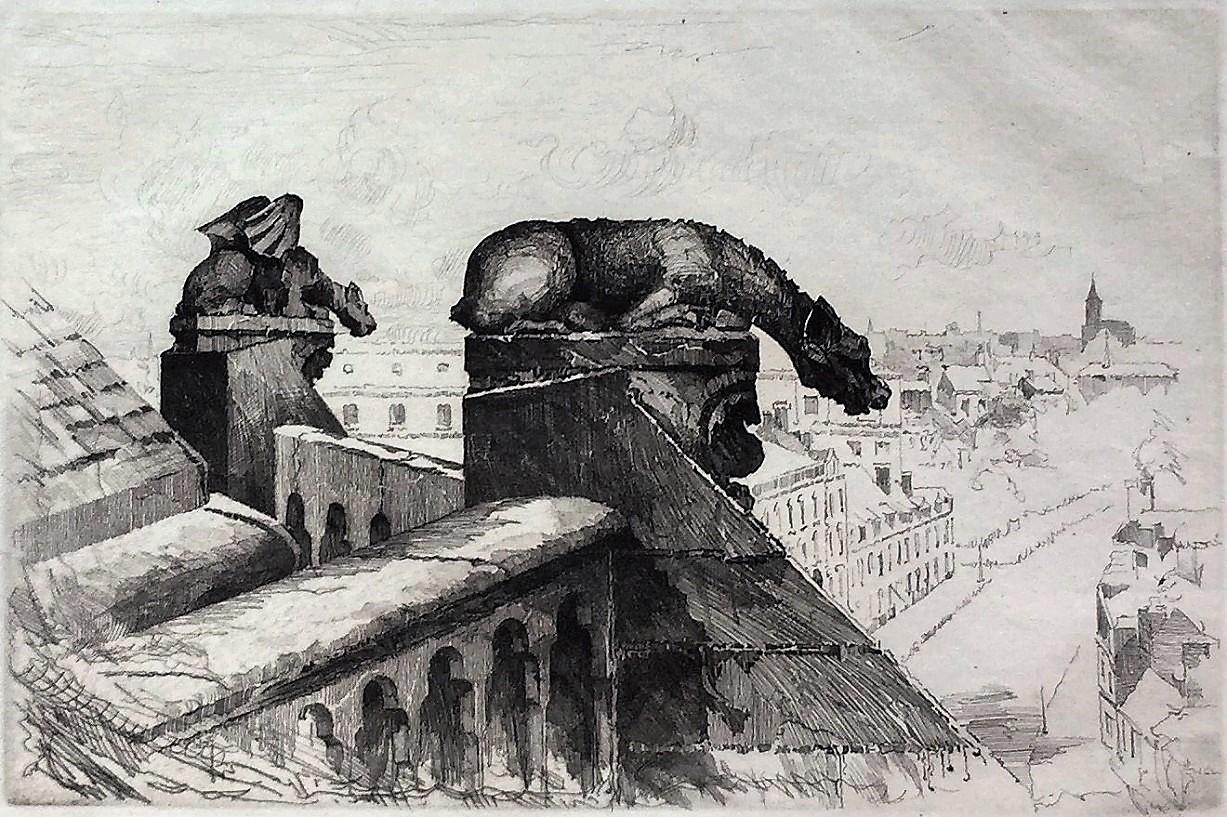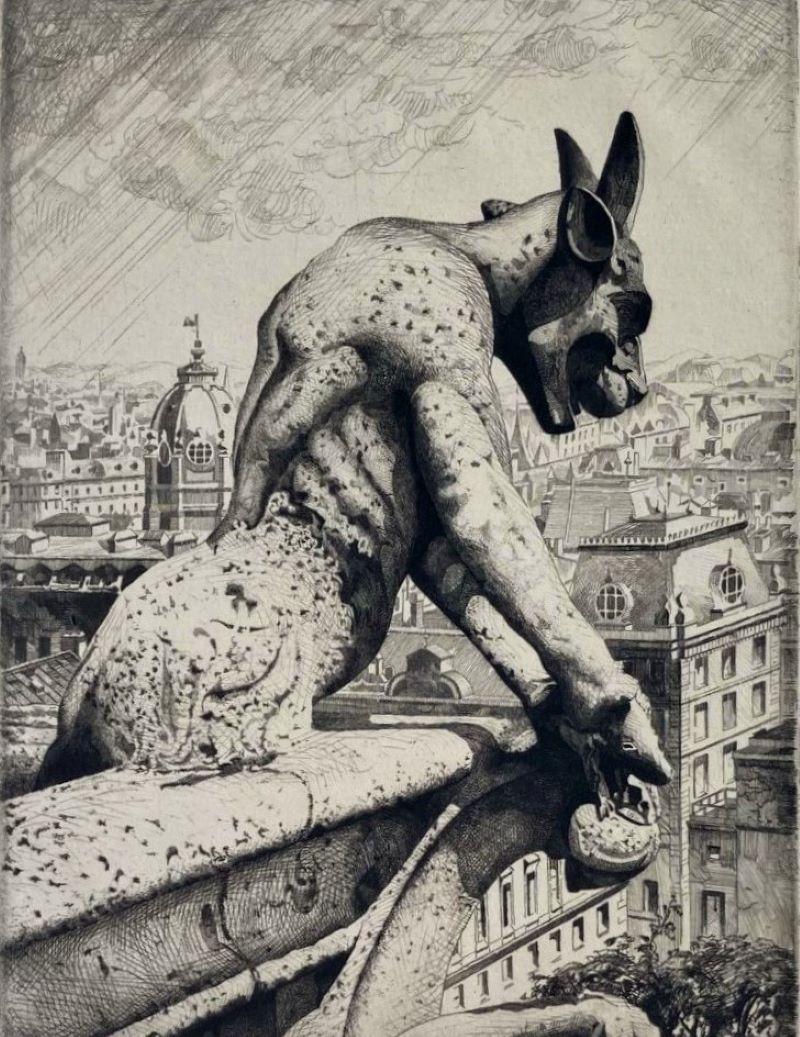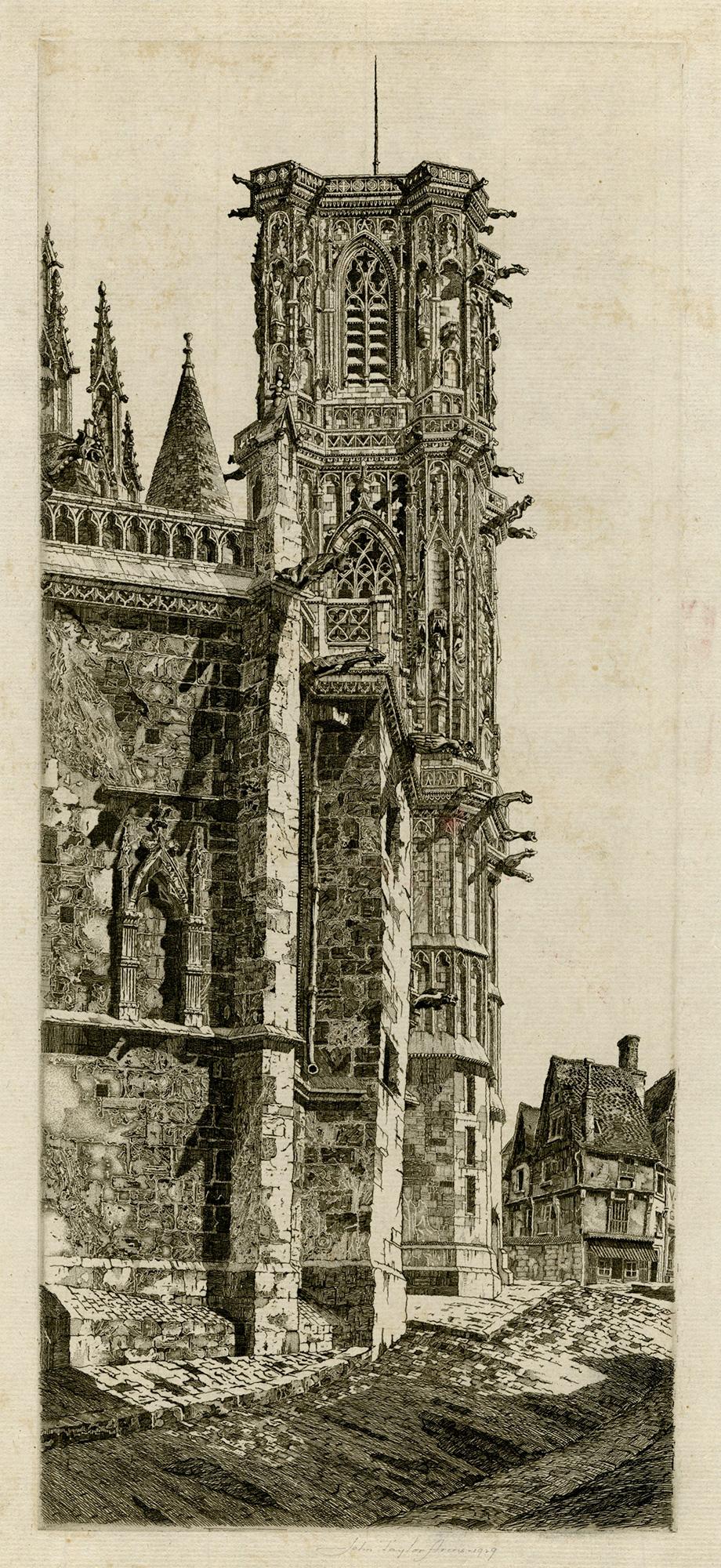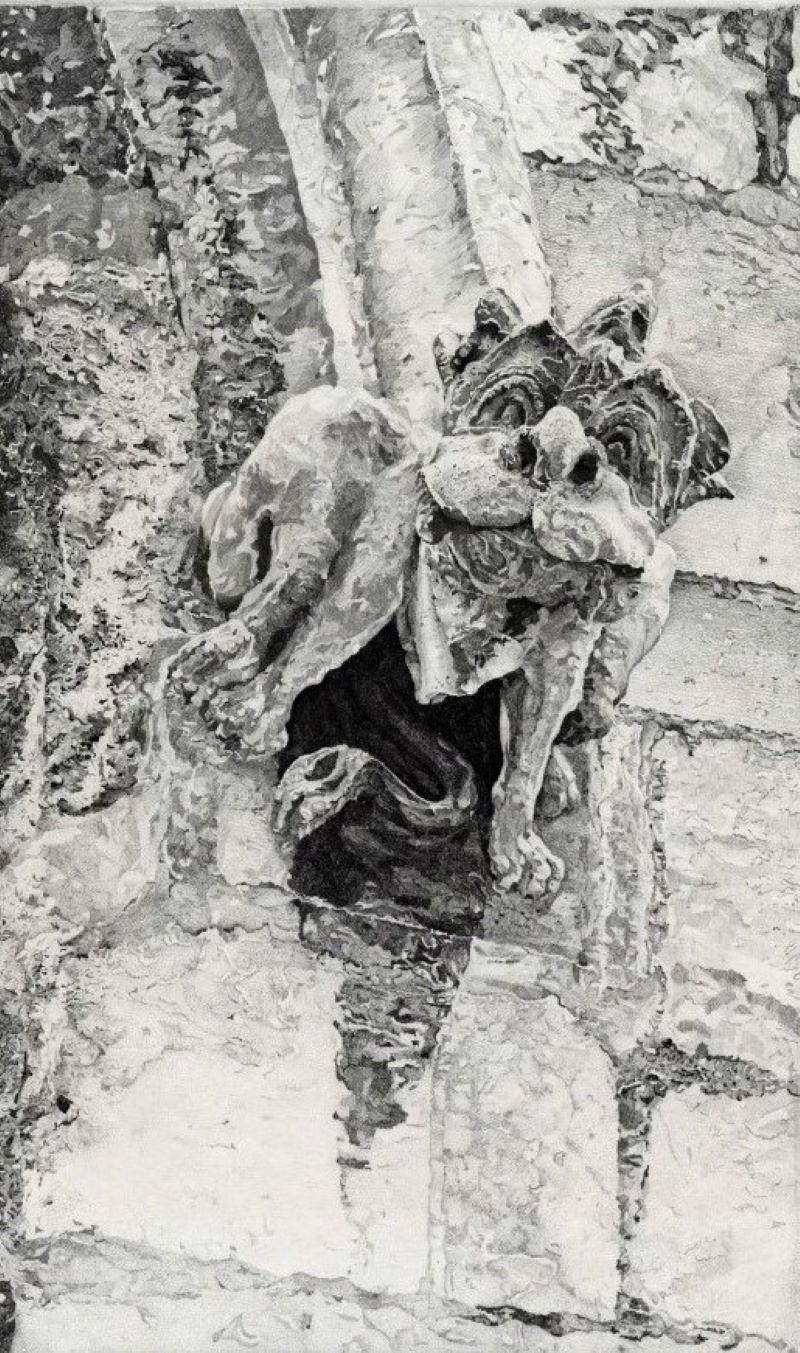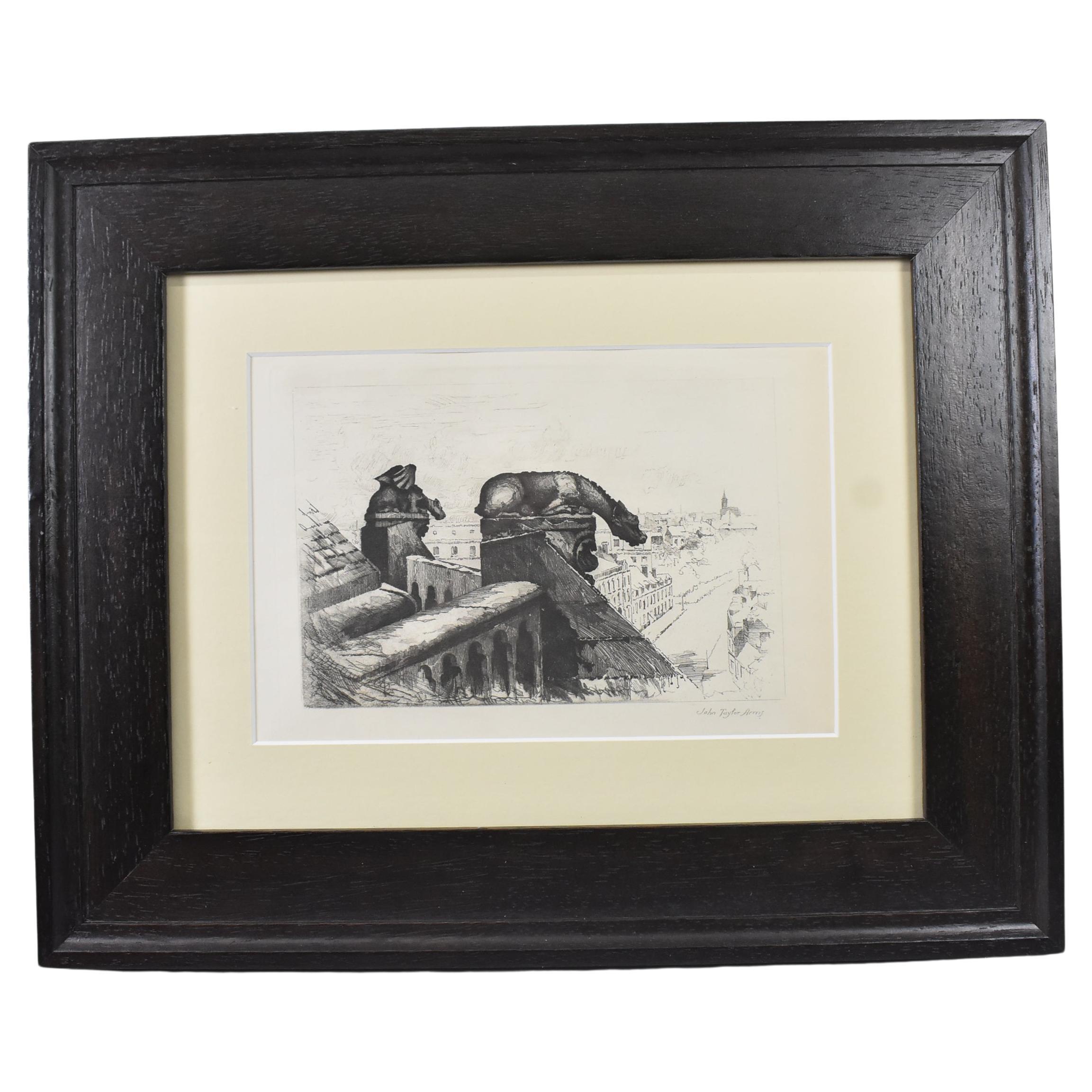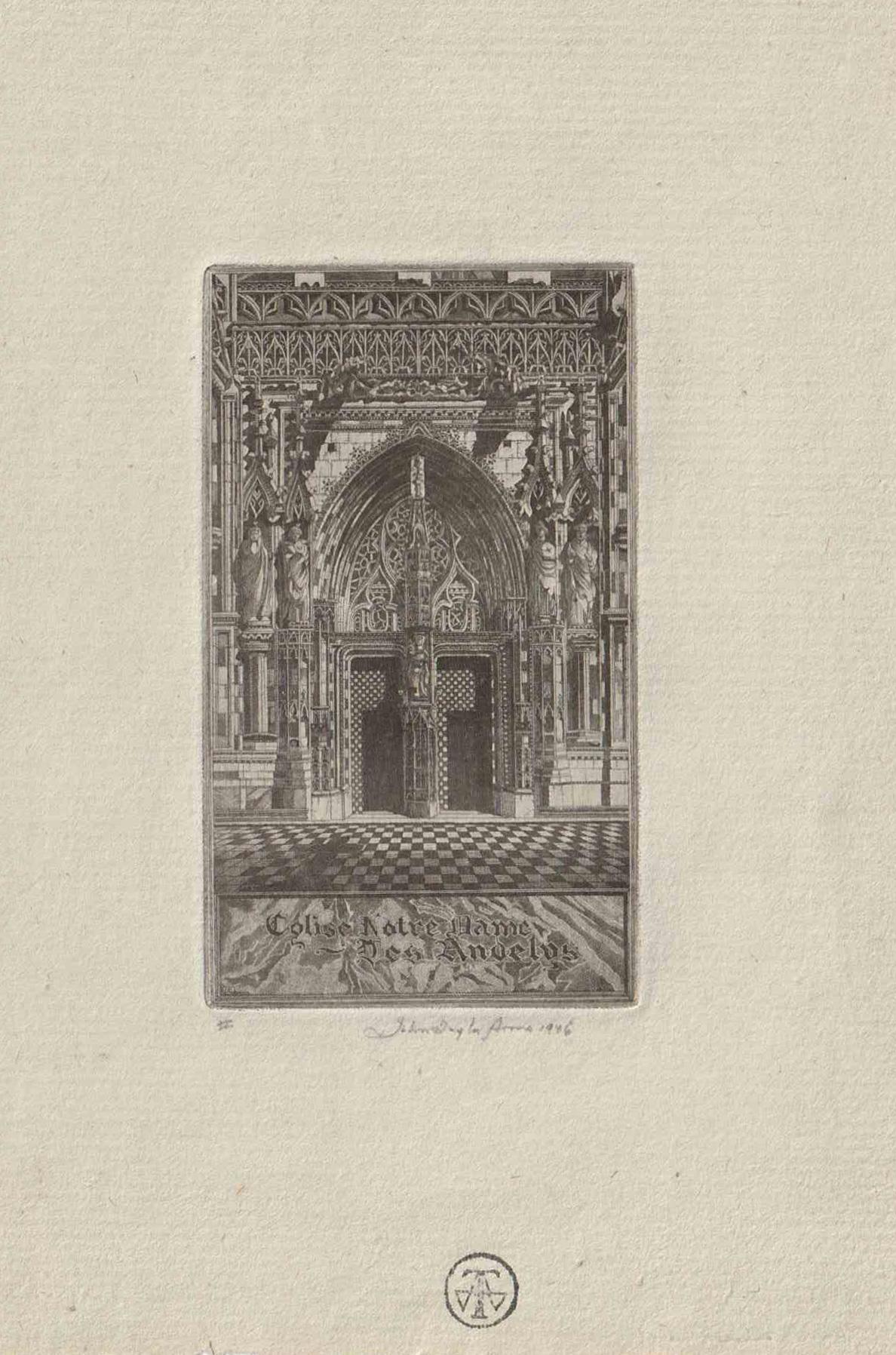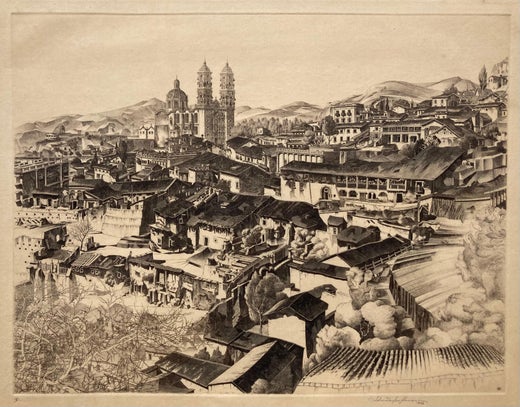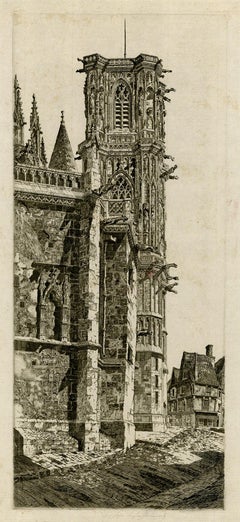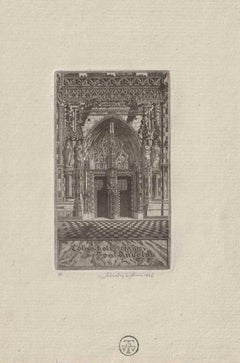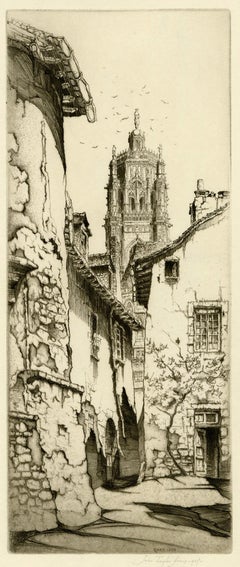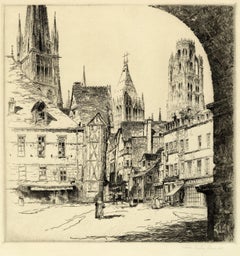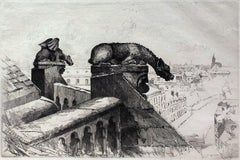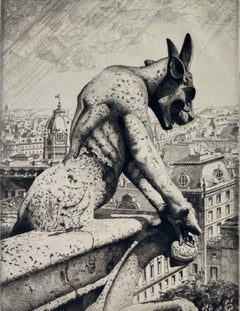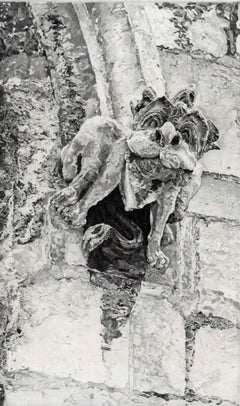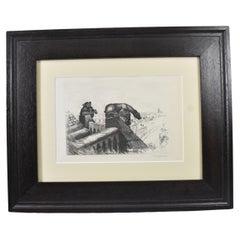John Taylor ArmsGuardians of the Spire; Amiens Cathedral Number 21937
1937
About the Item
- Creator:John Taylor Arms (1887 - 1953, American)
- Creation Year:1937
- Dimensions:Height: 6.75 in (17.15 cm)Width: 9.875 in (25.09 cm)
- Medium:
- Movement & Style:
- Period:
- Condition:Framed handsomely with archival materials and museum grade glass in a wood gilt frame with a garland and flower motif.
- Gallery Location:Middletown, NY
- Reference Number:Seller: BH4711stDibs: LU1979210341392
John Taylor Arms
John Taylor Arms was born in Washington, D.C., in 1887. Arms studied architecture at Princeton and MIT and later became the country’s finest etcher of his age. His renderings of European and American architectural subjects are not only beautiful, but they are unrivaled in their technical virtuosity and nuanced light. In a recent exhibit, the Cleveland Museum noted, Arms believed that art could be a tool for the spiritual and moral improvement of mankind and that Gothic cathedrals represented the most significant expression of man’s aspirations. He viewed printmaking as a vehicle for disseminating images of subjects that would uplift and inspire contemporary society. He served as President of the Society of American Etchers and as an ambassador for American printmakers and printmaking throughout the world.
- ShippingRetrieving quote...Shipping from: Middletown, NY
- Return Policy
More From This Seller
View AllMid-20th Century American Modern Landscape Prints
Laid Paper, Handmade Paper, Etching
Mid-20th Century American Modern Figurative Prints
Handmade Paper, Etching
Mid-20th Century American Modern Landscape Prints
Handmade Paper, Etching
1920s American Modern Landscape Prints
Laid Paper, Etching
Early 20th Century English School Figurative Prints
Etching, Laid Paper
1920s American Modern Landscape Prints
Handmade Paper, Laid Paper, Etching, Aquatint
You May Also Like
1920s American Modern Landscape Prints
Drypoint, Etching
1920s American Modern Landscape Prints
Drypoint, Etching
1920s American Modern Landscape Prints
Drypoint, Etching
Vintage 1920s Gothic Revival Prints
Paper
Mid-20th Century Contemporary Landscape Drawings and Watercolors
Pen
1930s Modern Landscape Prints
Etching
